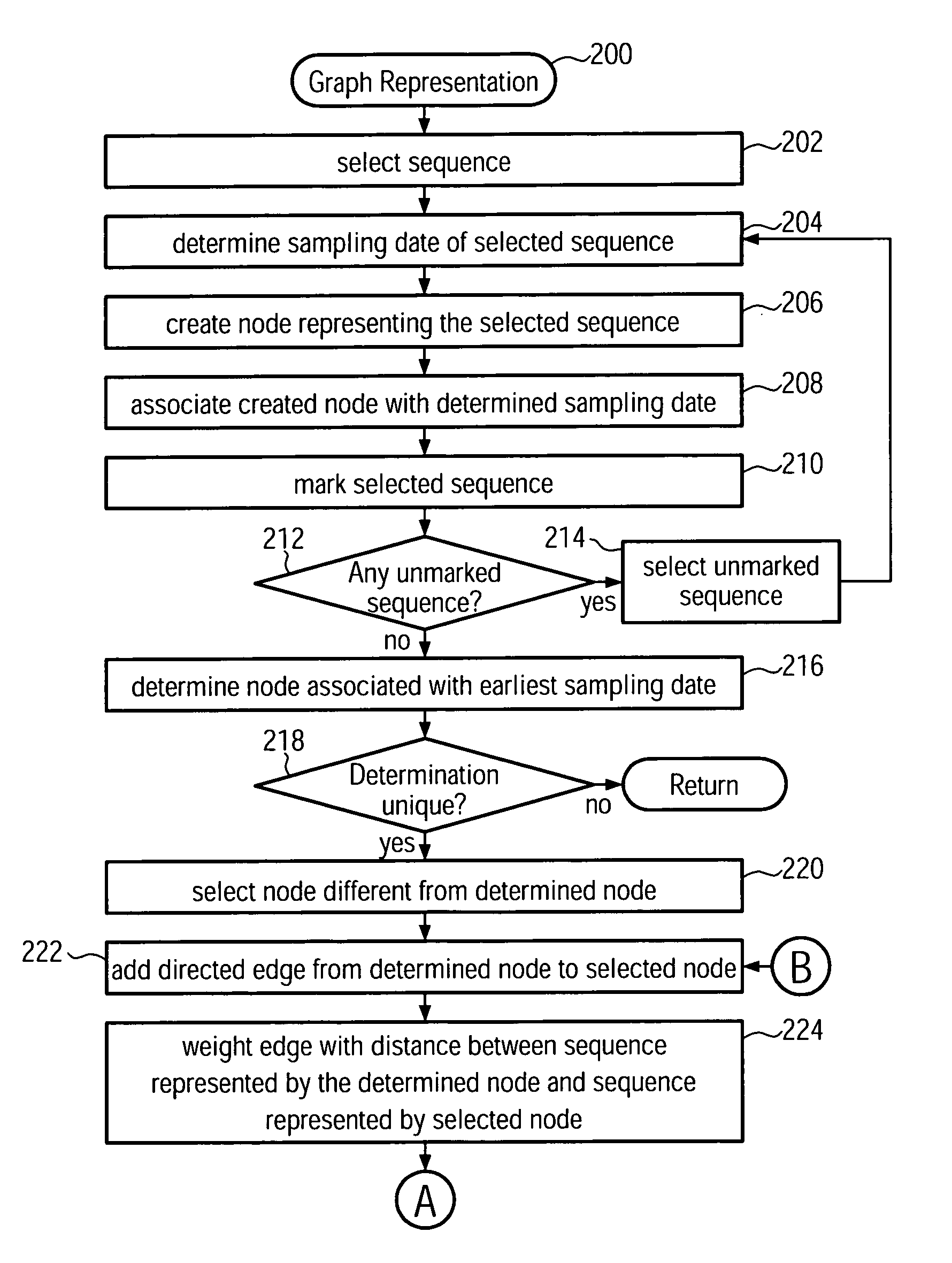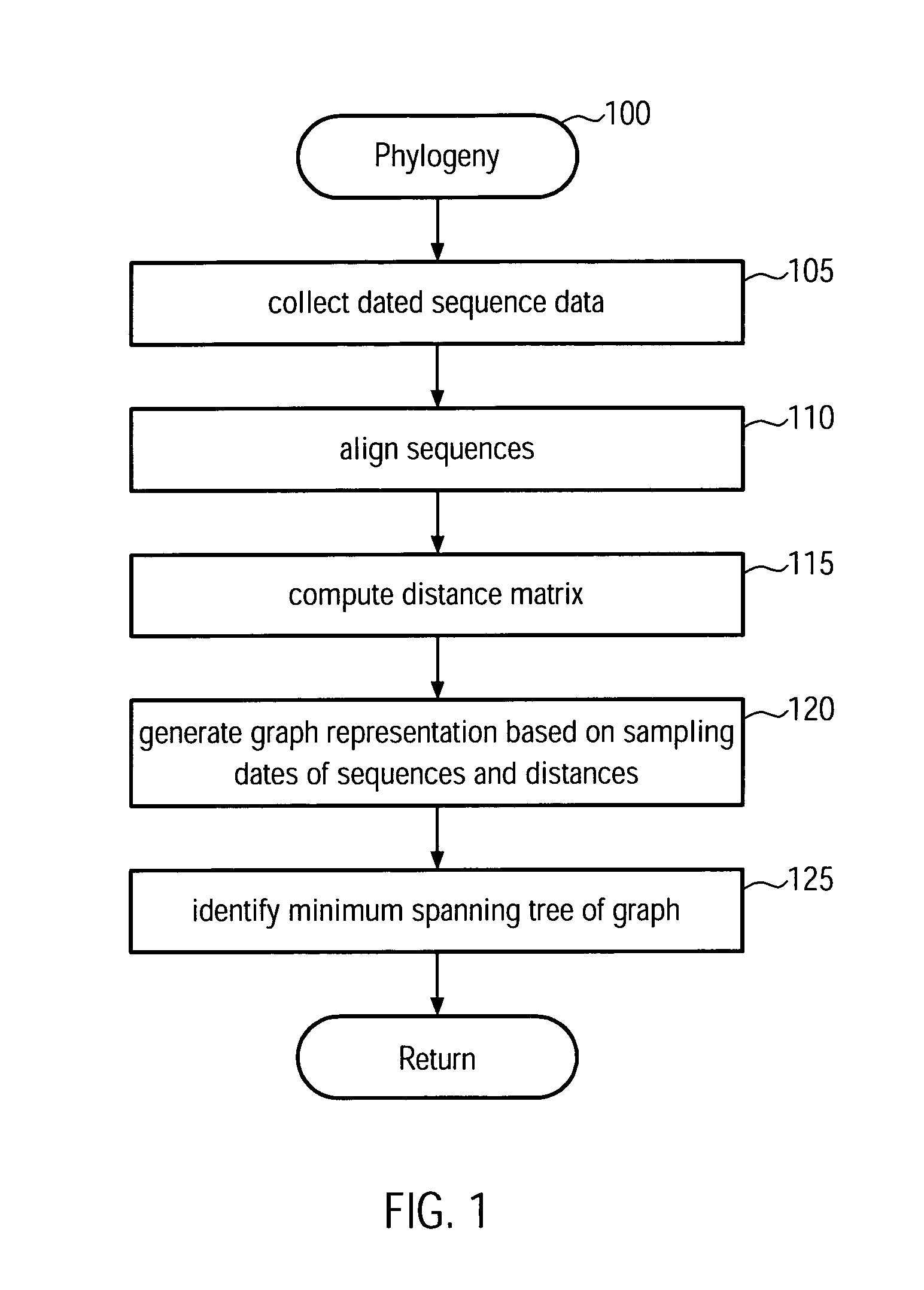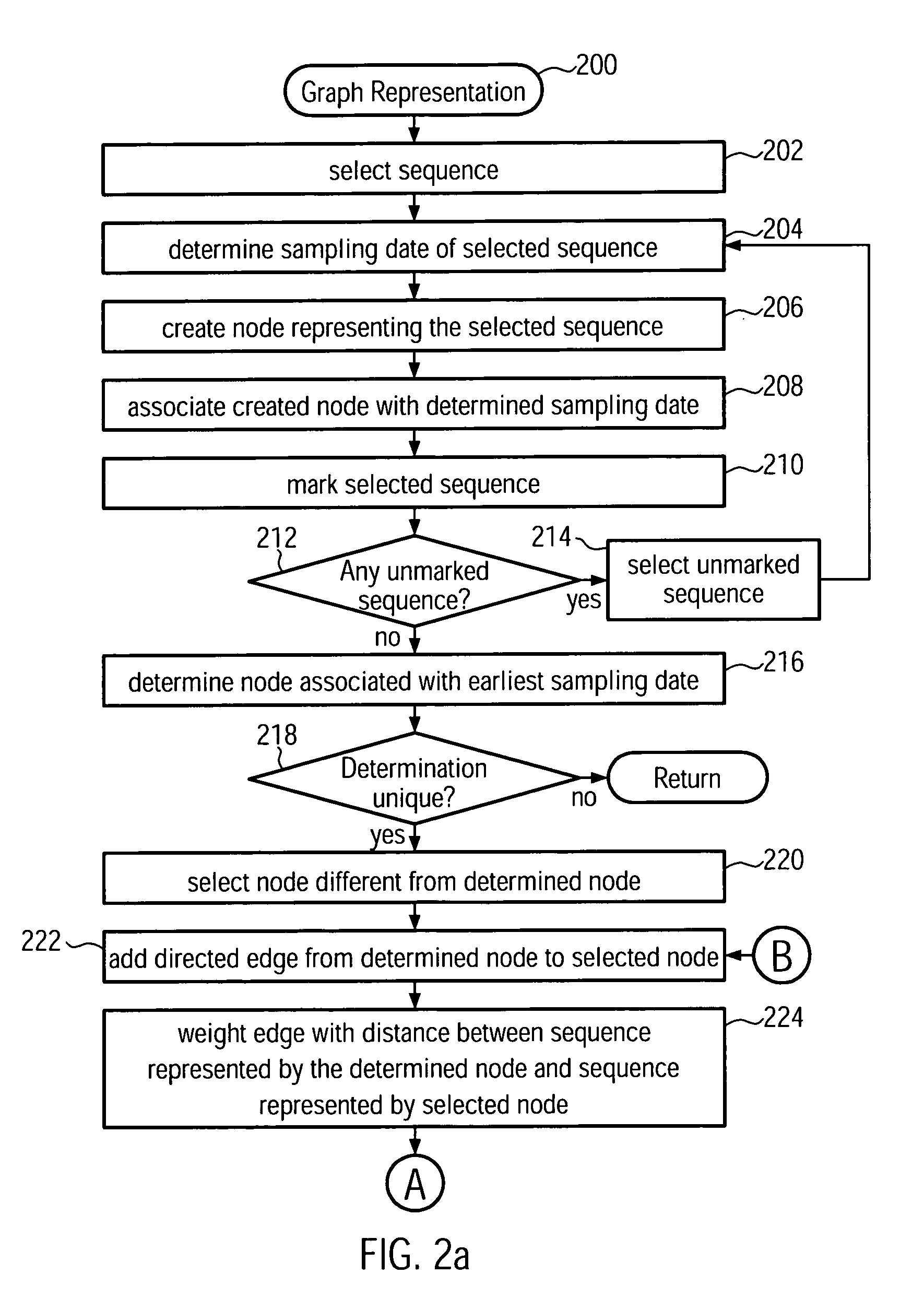Method and system for building a phylogeny from genetic sequences and using the same for recommendation of vaccine strain candidates for the influenza virus
a technology of phylogenetic tree and genetic sequence, which is applied in the direction of viruses/bacteriophages, instruments, antibody medical ingredients, etc., can solve the problems of large sequence set computational requirements, inability to perform well in upgma,
- Summary
- Abstract
- Description
- Claims
- Application Information
AI Technical Summary
Benefits of technology
Problems solved by technology
Method used
Image
Examples
Embodiment Construction
[0031]The illustrative embodiments of the present invention will be described with reference to the figure drawings, wherein like elements and structures are indicated by like reference numbers.
[0032]The present invention provides a new method and system for building phylogenetic trees (phylogenies) from biological sequences. For densely sampled sequence sets from a single evolving population such as the H3N2 subtype of seasonal influenza, a phylogeny which is identical or a close approximation in cost to a conventional maximum parsimony solution may be identified in at most quadratic time, which makes it applicable to data sets two to three orders of magnitude larger than what can be processed with conventional maximum parsimony techniques. The inferred trees may furthermore be multifurcating instead of bifurcating which is a more realistic representation of evolutionary relationships. Embodiments of the present invention are first to guarantee finding such a phylogeny, which is ad...
PUM
| Property | Measurement | Unit |
|---|---|---|
| Time | aaaaa | aaaaa |
| Time | aaaaa | aaaaa |
| Time | aaaaa | aaaaa |
Abstract
Description
Claims
Application Information
 Login to View More
Login to View More - R&D
- Intellectual Property
- Life Sciences
- Materials
- Tech Scout
- Unparalleled Data Quality
- Higher Quality Content
- 60% Fewer Hallucinations
Browse by: Latest US Patents, China's latest patents, Technical Efficacy Thesaurus, Application Domain, Technology Topic, Popular Technical Reports.
© 2025 PatSnap. All rights reserved.Legal|Privacy policy|Modern Slavery Act Transparency Statement|Sitemap|About US| Contact US: help@patsnap.com



